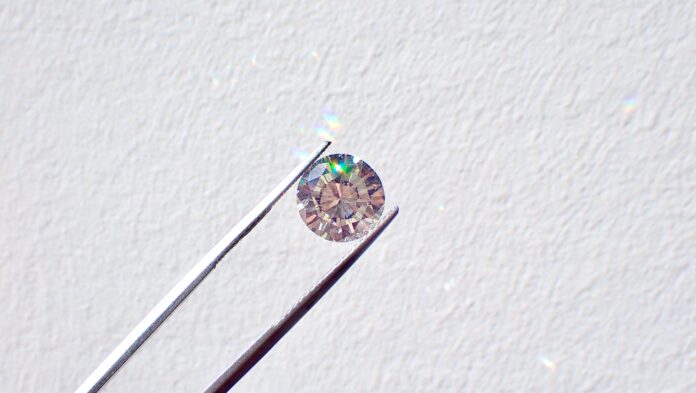Lab-grown diamonds, also known as synthetic diamonds or man-made diamonds, have emerged as a fascinating alternative to natural diamonds in recent years. These diamonds are created in a laboratory setting, replicating the natural diamond-growing process but in an accelerated manner. They possess the same physical, chemical, and optical properties as natural diamonds, making them virtually indistinguishable to the naked eye. Lab-grown diamonds offer a range of benefits, including ethical sourcing, environmental sustainability, and cost-effectiveness. Here are ten important things you need to know about lab-grown diamonds:
1. Creation Process: Lab-grown diamonds are produced using two primary methods: High Pressure-High Temperature (HPHT) and Chemical Vapor Deposition (CVD). The HPHT method involves subjecting a diamond seed to intense pressure and temperature, simulating the conditions found deep within the Earth. CVD, on the other hand, involves the deposition of carbon atoms onto a diamond seed using a carbon-rich gas in a controlled environment.
2. Diamond Composition: Lab-grown diamonds are composed of pure carbon, just like natural diamonds. Both types of diamonds possess the same crystal structure, known as diamond cubic, resulting in their exceptional hardness and durability.
3. Physical Properties: Lab-grown diamonds exhibit the same physical properties as natural diamonds. They have a hardness of 10 on the Mohs scale, making them the hardest known material. Additionally, they possess excellent thermal conductivity and refractive index, resulting in their brilliant sparkle and fire.
4. Visual Similarity: Lab-grown diamonds are visually identical to natural diamonds, even to trained gemologists. They possess the same color, clarity, and cut characteristics as natural diamonds, making it nearly impossible to differentiate between the two without specialized equipment.
5. Ethical Sourcing: One of the primary advantages of lab-grown diamonds is their ethical sourcing. These diamonds are created in a controlled laboratory environment, ensuring no human rights abuses, child labor, or environmental damage associated with traditional diamond mining. They provide a responsible and ethical choice for consumers concerned about the origins of their gemstones.
6. Environmental Impact: Lab-grown diamonds have a significantly lower environmental impact compared to natural diamonds. The mining and extraction of natural diamonds involve extensive land disruption, water pollution, and energy consumption. In contrast, lab-grown diamonds require less energy and do not contribute to environmental degradation, making them a more sustainable option.
7. Pricing: Lab-grown diamonds are generally more affordable than their natural counterparts. The controlled production process and reduced mining costs contribute to their competitive pricing. Consumers can purchase lab-grown diamonds of similar size and quality to natural diamonds at a lower price point, allowing for more accessible and budget-friendly options.
8. Availability: Lab-grown diamonds offer a consistent and reliable supply. Natural diamonds are limited by geological factors and finite resources, leading to fluctuations in availability and pricing. Lab-grown diamonds, however, can be produced on-demand, ensuring a steady supply to meet market demands.
9. Customization and Innovation: The lab-grown diamond industry provides opportunities for customization and innovation. Manufacturers can create diamonds of varying sizes, shapes, and colors, catering to individual preferences. This flexibility enables the production of unique and personalized diamond jewelry.
10. Market Acceptance: Lab-grown diamonds have gained increasing acceptance in the jewelry industry. Prominent jewelry brands and retailers now offer lab-grown diamond options alongside natural diamonds, recognizing the growing demand for ethical and sustainable alternatives. Consumers are embracing lab-grown diamonds as a conscious choice without compromising on the beauty and quality of their jewelry.
Lab-grown diamonds are synthetic diamonds that closely mimic natural diamonds in terms of composition, physical properties, and visual appearance. They are created using advanced technologies and offer several advantages such as ethical sourcing, environmental sustainability, affordability, and availability. The creation process of lab-grown diamonds involves two primary methods: High Pressure-High Temperature (HPHT) and Chemical Vapor Deposition (CVD). The HPHT method mimics the natural diamond-growing process by subjecting a diamond seed to extreme pressure and temperature, replicating the conditions found deep within the Earth. On the other hand, CVD involves the deposition of carbon atoms onto a diamond seed using a carbon-rich gas in a controlled environment.
Lab-grown diamonds are composed of pure carbon, just like natural diamonds. They possess the same crystal structure, known as diamond cubic, which gives them exceptional hardness and durability. With a hardness of 10 on the Mohs scale, lab-grown diamonds are the hardest known material. Additionally, they exhibit excellent thermal conductivity and a high refractive index, resulting in their brilliant sparkle and fire. Visually, lab-grown diamonds are virtually indistinguishable from natural diamonds, even to trained gemologists. They possess the same color, clarity, and cut characteristics, making it challenging to tell them apart without specialized equipment.
One of the most significant advantages of lab-grown diamonds is their ethical sourcing. Unlike natural diamonds, which are often associated with issues such as human rights abuses, child labor, and environmental damage, lab-grown diamonds offer a responsible and ethical choice. They are created in controlled laboratory settings, ensuring that no harm is caused to humans or the environment during the production process. This aspect appeals to consumers who are concerned about the origins of their gemstones and want to make an informed and conscientious purchase.
Lab-grown diamonds also have a significantly lower environmental impact compared to natural diamonds. Traditional diamond mining involves extensive land disruption, water pollution, and energy consumption. In contrast, the production of lab-grown diamonds requires less energy and does not contribute to environmental degradation. By choosing lab-grown diamonds, consumers can minimize their ecological footprint and support a more sustainable option in the jewelry industry.
In terms of pricing, lab-grown diamonds are generally more affordable than natural diamonds. The controlled production process and reduced mining costs contribute to their competitive pricing. Consumers can find lab-grown diamonds of similar size and quality to natural diamonds at a lower price point, allowing for more accessible and budget-friendly options. This affordability factor makes lab-grown diamonds an attractive choice for those seeking high-quality gemstones within a specific budget.
Another advantage of lab-grown diamonds is their availability. Natural diamonds are limited by geological factors and finite resources, leading to fluctuations in availability and pricing. In contrast, lab-grown diamonds can be produced on-demand, ensuring a steady supply to meet market demands. This consistent availability provides consumers with more choices and flexibility when selecting their desired diamond jewelry.
The lab-grown diamond industry also fosters customization and innovation. Manufacturers have the ability to create diamonds of varying sizes, shapes, and colors, catering to individual preferences. This flexibility allows for the production of unique and personalized diamond jewelry pieces. Consumers can have greater control over the design and specifications of their lab-grown diamond jewelry, resulting in a truly one-of-a-kind experience.
Over time, lab-grown diamonds have gained acceptance in the jewelry industry. Prominent jewelry brands and retailers now offer lab-grown diamond options alongside natural diamonds, acknowledging the growing demand for ethical and sustainable alternatives. Consumers are increasingly embracing lab-grown diamonds as a conscious choice that aligns with their values without compromising on the beauty and quality of their jewelry.
Lab-grown diamonds are an innovative and sustainable alternative to natural diamonds. They possess the same physical, chemical, and optical properties as natural diamonds, making them visually indistinguishable. Lab-grown diamonds offer numerous advantages, including ethical sourcing, environmental sustainability, affordability, and availability. With the increasing acceptance of lab-grown diamonds in the jewelry industry and a growing awareness among consumers, the market for lab-grown diamonds is expanding rapidly.
As the popularity of lab-grown diamonds continues to grow, it is important to note that they are not meant to replace natural diamonds. Natural diamonds have their own unique charm and allure, deeply rooted in their rarity and the fascinating geological processes that create them. However, lab-grown diamonds provide an ethical and sustainable alternative that meets the needs and preferences of a changing market.
When purchasing lab-grown diamonds, it is crucial to ensure that they come with proper certification. Leading gemological institutes, such as the Gemological Institute of America (GIA), provide grading reports for lab-grown diamonds, which assess their quality based on the same criteria used for natural diamonds. These reports provide consumers with confidence and transparency in their purchase, guaranteeing that they are receiving a genuine lab-grown diamond of the highest standards.
It is also worth noting that lab-grown diamonds are a relatively new development in the diamond industry, and ongoing research and technological advancements are continuously improving their quality and production processes. As technology evolves, it is likely that lab-grown diamonds will become even more accessible, affordable, and customizable, further increasing their appeal to a wide range of consumers.
In conclusion, lab-grown diamonds are a remarkable innovation in the world of gemstones. They offer a sustainable, ethical, and cost-effective alternative to natural diamonds, without compromising on beauty, durability, or value. Lab-grown diamonds have become an attractive choice for those seeking high-quality diamonds with a smaller environmental footprint and a clear conscience. With their visual similarity to natural diamonds, availability, and growing acceptance in the market, lab-grown diamonds are here to stay, shaping the future of the diamond industry. Whether you choose a lab-grown diamond or a natural diamond, what matters most is finding a precious gem that speaks to your personal style, values, and emotions.






















